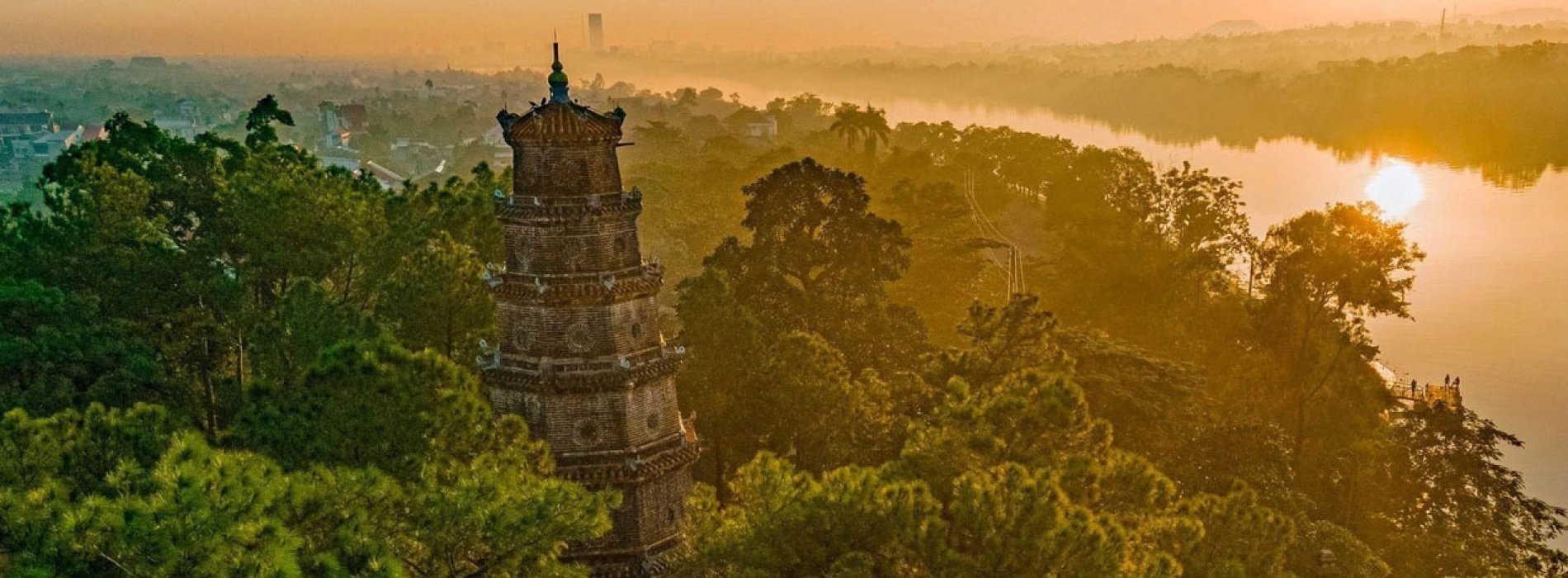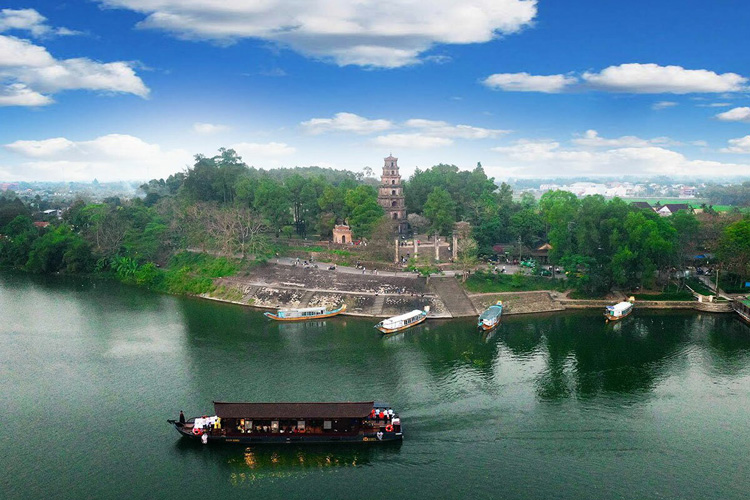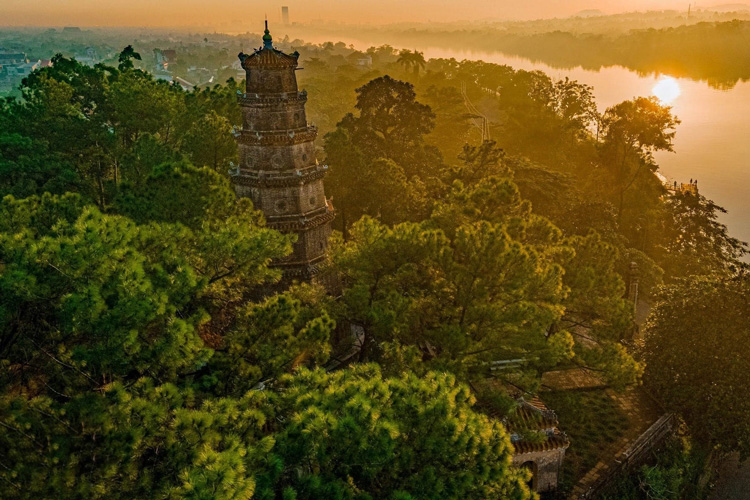Thien Mu Pagoda

Thien Mu Pagoda, nestled in picturesque Hue, Vietnam, is a revered Buddhist temple with a rich history dating back to its founding in 1601. Explore this iconic landmark's cultural and architectural splendor, notably its awe-inspiring seven-story Phuoc Duyen Tower, which offers breathtaking views of the Perfume River and the surrounding landscape. Immerse yourself in the spiritual ambiance of the Dai Hung Shrine, home to the revered Dai Hong Chung bell. Let's explore with Asia King Travel provides essential details for visitors, including accessibility from Hue's city center, the significance of Thien Mu Pagoda as a symbol of Vietnamese heritage, and the opportunity to witness traditional Buddhist ceremonies. Plan to visit this cultural gem and experience the profound connection to Vietnam's rich history and spiritual traditions.
.jpg)
Thien Mu Pagoda Unique in picturesque Hue Vietnam
The story of Thien Mu Pagoda, also known as the Linh Mu Pagoda, is a captivating tale that weaves together legends, spirituality, and a rich tapestry of history. The saga begins during the reign of Lord Nguyen Hoang, a time of political upheaval and uncertainty in the region. According to local folklore, an elderly woman appeared one mystical night on Ha Khe Hill and prophesied that a great lord would bring prosperity to the land by constructing a pagoda at that very spot. Intrigued by this divine revelation, Lord Nguyen Hoang decided to heed the prophecy.
In 1601, the foundation stone of Thien Mu Pagoda was laid, marking the commencement of a journey that would span centuries. Initially, the pagoda was a modest structure, but over time, it underwent numerous expansions and renovations, evolving into the grand complex that graces the landscape of Hue today.

Panorama of Thien Mu Pagoda
The crowning jewel of Thien Mu Pagoda is the Phuoc Duyen Tower, a soaring seven-story structure erected in 1844 by Emperor Thieu Tri. This architectural masterpiece not only stands as an emblem of the pagoda but also serves as an iconic symbol of the city of Hue. Each tier of the tower is devoted to a different Buddha, and its intricate design reflects the essence of Vietnamese Buddhist architecture.
Nestled within the pagoda grounds, the Dai Hung Shrine houses the Dai Hong Chung bell, a revered artifact cast in 1710. The bell's resonant tones have echoed through the ages, marking significant moments in the pagoda's history and spiritual practices.
Thien Mu Pagoda has played a central role in various historical events, adding layers of significance to its narrative. During the Vietnam War in the 1960s, the pagoda became a focal point for protests by Buddhist monks against the government. The image of Thien Mu Pagoda, with its elegant tower and serene surroundings, became synonymous with the monks' resistance and resilience.
Today, Thien Mu Pagoda stands not only as a religious and historical monument but also as a living testament to the endurance of the Vietnamese people. Its story, shaped by legends, political struggles, and religious devotion, continues to unfold for those who visit, offering a glimpse into the spiritual and cultural soul of Vietnam. As visitors explore the pagoda's grounds, surrounded by meticulously landscaped gardens and overlooking the Perfume River, they are not just witnessing history but immersing themselves in the enduring spirit of Thien Mu.
The best time to visit Thien Mu Pagoda is during the dry season from March to August. Thien Mu Pagoda is open daily from 8:00 am to 6:00 pm, offering ample time for exploration. To fully appreciate the tranquil atmosphere and picturesque views of the Perfume River, it is advisable to visit in the morning when the crowds are minimal. The period from March to August aligns with the dry season, providing clear skies and pleasant weather for an enjoyable visit. Additionally, if you're interested in traditional cultural activities and savoring delicious vegetarian food, consider planning your visit on special occasions such as the 1st or 15th day of any lunar month or during Tet holiday. These times offer a unique opportunity to immerse yourself in the rich cultural heritage of Thien Mu Pagoda.

Sunset at Thien Mu Pagoda
Situated on Nguyen Phuc Nguyen Street, just 5 kilometers from the heart of Hue City, Thien Mu Pagoda is conveniently accessible from any part of the city. The pagoda's location allows for easy transportation, and tourists can choose from various means to reach this iconic attraction. Taxis and motorbikes stand out as the two most popular options for reaching Thien Mu Pagoda. Whether you opt for the convenience of a taxi or the flexibility of a motorbike, the journey from downtown to the pagoda typically takes between 15 to 20 minutes, contingent on traffic conditions. This accessibility ensures that visitors can seamlessly integrate a visit to Thien Mu Pagoda into their exploration of Hue City, enjoying the cultural and spiritual richness it offers.
When planning a visit to Thien Mu Pagoda, keep these guidelines in mind:
Besides visiting Thien Mu Pagoda in Hue, it is highly recommended that you spend time exploring some nearby tourist attractions such as Hoi An and Da Nang. This is also one of the attractive places that Asia King Travel recommends you explore at least once.